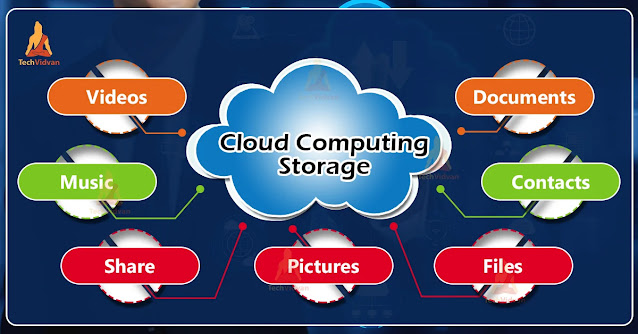What is Cloud Computing and Storage
What is Cloud Computing and Storage
Cloud Computing refers to the delivery of services – including servers, storage, databases, networking, software, analytics, and intelligence – over the internet (“the cloud”) to offer faster innovation, flexible resources, and economies of scale. Cloud Storage is a service that enables users to store, access, and manage their data and files over the internet through remote servers created by cloud storage service providers. These servers offer secure, scalable, and redundant data storage, eliminating the need for physical storage devices.
Cloud Computing storage refers to the delivery of storage capacity as a service over the internet. It allows users to store, access, and manage their data and files remotely rather than storing them on a local hard drive or server. Cloud storage providers typically offer scalable, reliable, and cost-effective solutions for businesses and individuals to store and manage their data. Examples of Cloud Computing storage services include Amazon Web Services S3, Microsoft OneDrive, Google Drive, and Dropbox.
Let’s look at some key points:
- Scalability: Cloud storage can be scaled up or down based on changing storage needs, making it an ideal solution for businesses with growing storage demands.
- Accessibility: Data stored in Cloud Computing can be accessed from anywhere with an internet connection, enabling remote collaboration and teamwork.
- Reliability: Cloud storage providers typically offer high levels of uptime and data security through the use of multiple copies of stored data across various locations.
- Cost-effectiveness: With Cloud Storage, users pay only for the storage they use, making it a more affordable solution compared to maintaining on-premises storage systems.
- Automatic Backup: Cloud storage provides automatic backups, reducing the risk of data loss due to hardware failures or human error.
However, it’s important to note that cloud storage also comes with security concerns, and users should carefully review the security measures provided by their chosen cloud storage provider before storing sensitive information.
- Data Sovereignty: Depending on the location of the cloud storage provider, regulations and laws may apply that can limit users’ access or control over the data stored in Cloud Computing.
- Performance: The performance of cloud storage can be affected by factors such as network latency, internet bandwidth, and the location of the data center.
- Integration: Some Cloud Computing providers offer APIs and other integration options that allow seamless integration with other cloud-based services and on-premises systems.
- Cost Structure: Cloud storage providers typically charge based on the amount of data stored, the frequency of data access, and the type of storage service used. It’s important to understand these costs and how they may change over time to avoid unexpected charges.
- Security and Compliance: Cloud storage providers offer various levels of security, including encryption, access control, and audit trails. However, it’s crucial for users to assess the security and compliance requirements for their specific use case and ensure that their chosen cloud storage provider can meet those needs.
Overall, Cloud Computing storage offers a convenient and cost-effective solution for storing and managing data, but it’s important to carefully evaluate the various options and consider the specific needs of your use case.







